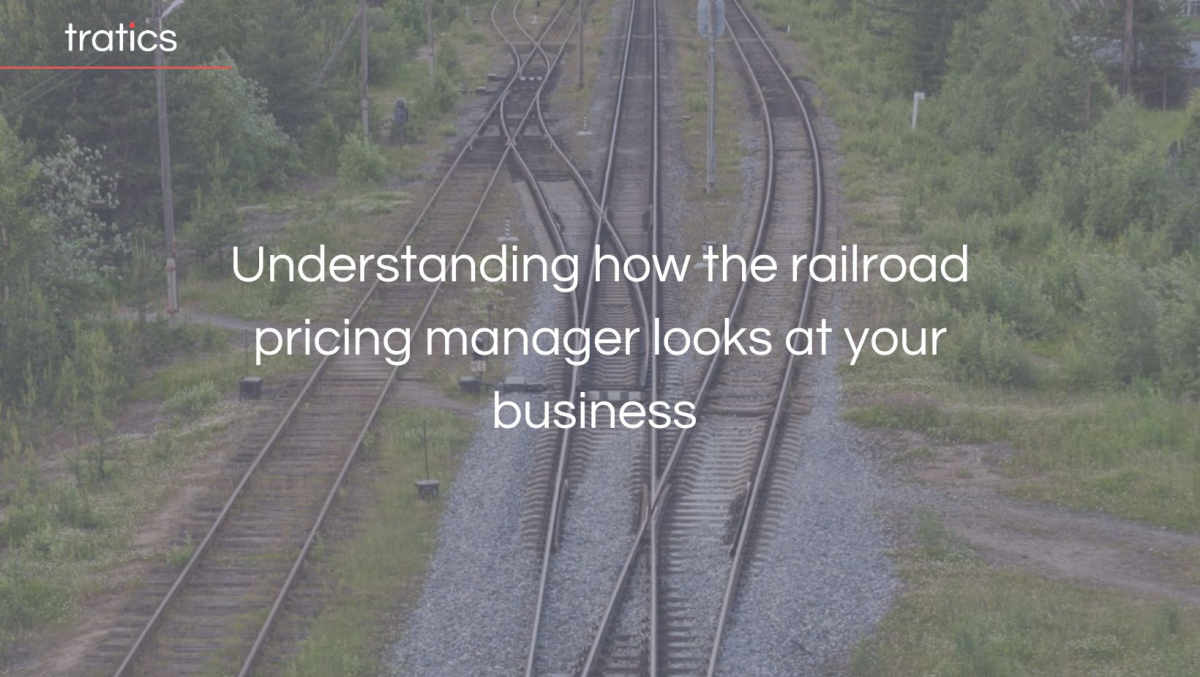Demand for shipping via rail remains high, while railroads implement capacity constraints and operating initiatives aimed at lowering operating ratios (for example Precision Scheduled Railroading or PSR). Railroad operating departments are tasked with cutting costs, while sales are pushed to keep increasing prices. It is no secret that rail rates have been increasing for years. While the railroad is pushing for higher prices, they will respond to competitive market information. The Railroad wants your business.
The first element the rail pricing manager considers is your company’s size and rank as a customer. The top 3-5 customers by volume and revenue within a commodity group usually receive special treatment, so it is useful to identify where you stand in terms of rank. For example, do you have a dedicated account manager, special tariff rate discounts, or the benefit of having a private confidential rate contract? These are some benefits a “top customer” might receive.
Another consideration is the profitability of your book of business, and the profitability of the industry sector that your commodities are a part of. How does your book of business compare in profitability to the overall profitability of your Industry, such as Plastics, Scrap Metal, or Pulpboard? This information requires deep knowledge and information on railroad data from multiple sources.
Are you currently in the process of negotiating your next contract? Then a key question the railroad will ask is this: what additional volume can you provide? The railroads are always looking for additional volume, especially competitive business that they can take away from their direct competitors. This kind of carrot is very effective in rail rate negotiations. Savvy shippers will use competitive traffic to pit one railroad against another from one year to the next, switching service based on which railroad provides the best prices.
How much volume are you willing to commit? We all like certainty! But the railroads like certainty especially, since they run network systems where predictability is key to controlling costs. You may run into a request for a volume commitment, with make-up provisions or liquidated damages provisions. This means you either move the number of committed carloads or pay penalties for any shortage of volume.
How much of your business is captive vs competitive? Figure out how much of the traffic you move on any line is captive to that particular railroad you are in negotiations with. If you aren’t aware, the railroad manager certainly will be. In these instances, knowledge is truly power, and some digging using the Tratics rail rate analysis tools enable you to understand which lanes you can focus your negotiations on.
Railroads are always comparing themselves to their direct competitor, as well as to the overall industry. Be in the know about your carrier’s market share vs their direct rail competitor. We at Tratics can provide rail market share analysis using the railroad weekly carload volume by commodity groupings.
Always compare your rates against tariff rates. For many commodities, the railroads prefer to use tariff prices. Yet for others, no tariffs are used whatsoever. For example, if you are shipping certain chemicals commodities, the tariff rates for you are purposely priced extremely high. So, you have to negotiate rates for each and every lane. For other types of shippers, tariff rates can be used as a benchmark even if you do not use them. The railroad pricing manager will compare your contract rates versus the tariff to figure out the percentage discount. They may look to increase your private rates which have the highest discount rates versus tariff rates. Tratics makes searching for tariff rates easy - find and compare any rates for any railroad in one portal.
For most bulk rail shipments, trucking is not a real option. Railroads are aware of this. Yet, they will compare that data to see the rate difference versus trucks. Shippers should be prepared by securing competing truck rates.
For cases where your pleas run into deaf ears with the railroad, you may have to use regulatory and mediation options. The Surface Transportation Board (STB) exists to serve as a regulator and a mediator for shippers of the railroad and the railroads themselves. Although rate cases before the STB are exceedingly rare, because of the cost and time required, very few shippers know of the informal issue resolution options with the STB. The Rail Customer and Public Assistance Program (RCPA) is the vehicle by which many disputes can be resolved. Have you had trouble reaching people at the Railroad where maybe even your account rep will not respond? You will be surprised how quickly the issue arises at the VP level when they receive a call from the STB.
Tratics is a cutting-edge rail rate management and analysis platform that provides rail rate visibility and a series of analysis tools to help shippers secure the lowest rates for their shipments. Our application combines rate and contract management, Rule 11 combinations, advanced search and query, in-application rate requests, and a library of key rail data, giving shippers the ability to quickly respond to changes in their supply chain.


